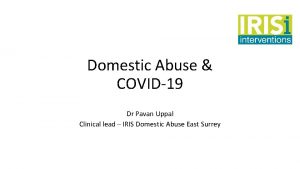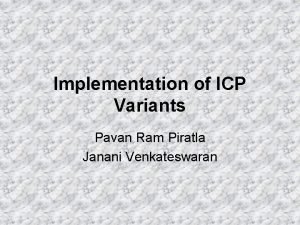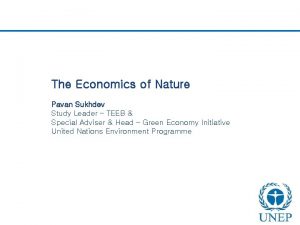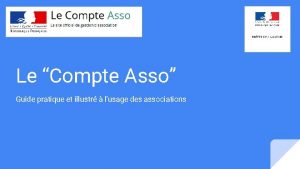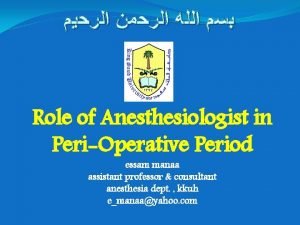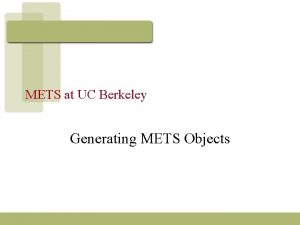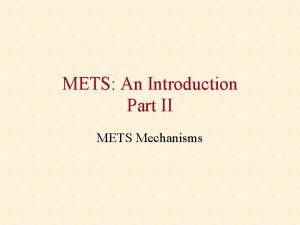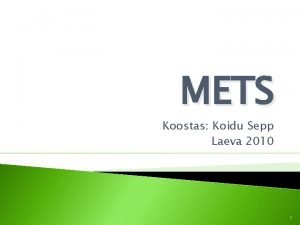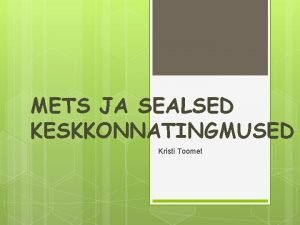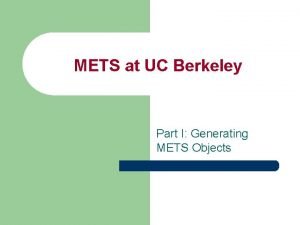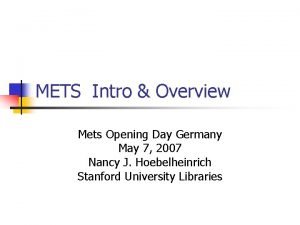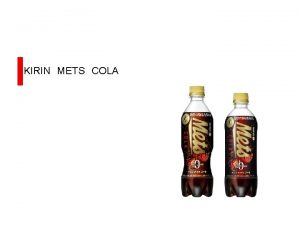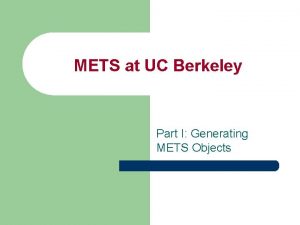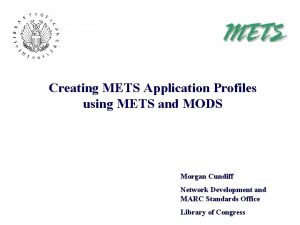Dr Pavan Udavant Asso Professor in METs Institute














- Slides: 14

Dr. Pavan Udavant Asso. Professor in MET’s Institute of Pharmacy, dept. Of Pharmaceutics; Flipped classroom topic is Osmosis. IDP in Educational Technology, IIT Bombay 1

Osmosis Solutions of Electrolytes & Non Electrolytes Physical Pharmaceutics-I 2 nd Year B. Pharm Students MET’s Institute of Pharmacy, Nashik IDP in Educational Technology, IIT Bombay 2

Out-of-class Activity Design -1 Learning Objective(s) of Out-of-Class Activity At the end of watching the videos student should be able to 1. Define osmosis and Osmotic pressure 2. Explain the principle of Osmosis 3. Explain diffusion, osmosis and tonicity Key Concept(s) to be covered 1. Mechanism of Osmosis 2. Mechanism of diffusion 3. Tonicity IDP in Educational Technology, IIT Bombay 3

Out-of-class Activity Design - 2 Main Video Source URL License of Video V 1. https: //www. youtube. com/watch? v=z. Rd. CR 5 uymr 0 V 2. https: //www. youtube. com/watch? v=Gw. YCr 0 Vub. NM Creative Commons Attribution licence (reuse allowed) Mapping Concept to Video Source CONCEPT VIDEO SEGMENT DURATION (in min) Osmosis 00. 00 – 01. 36 Diffusion, Osmosis & Tonicity 00. 00 - 09. 39 TOTAL DURATION 10. 75 min IDP in Educational Technology, IIT Bombay 4

Out-of-class Activity Design - 3 Aligning Assessment with Learning Objective Learn principle of osmosis Learn the Basis of Diffusion and Tonicity Assessment Strategy Expected duration (in min) Additional Instructions (if any) 10 min Watch V 1 and Watch V 2 and then answer. Try to correlate the phenomenon with blood cell 10 min Watch V 2 and then answer Each question carries two marks and it will be considered in Practical Sessional examination in stead of viva Q. 1. Define osmosis Q. 2. What is Diffusion process and Tonicity IDP in Educational Technology, IIT Bombay 5

In-class Activity Design -1 Learning Objective(s) of In - Class Activity At the end of the class, students will be able to, § § Explain tonicity and application of osmosis process. Define Diffusion and tonicity and applications of tonicity Key Concept(s) to be covered 1. Diffusion and Tonicity IDP in Educational Technology, IIT Bombay 6

In-class Activity Design -2 Active Learning activity(ies) that you plan to do 1. Real world examples, Think-Pair-Share 2. Peer discussion IDP in Educational Technology, IIT Bombay 7

In-class Activity Design -2 Peer Instruction Strategy – What Teacher Does Pose the two PI questions at the start of the class and provide summary of osmosis. Q 1: What will happen when two solutions of different concentrations are separated by semi permeable membrane? 1. Liquid move from higher concentration to lower concentration 2. Liquid move from lower concentration to higher concentration 3. Solute move from higher concentration to lower concentration 4. Solute move from lower concentration to higher concentration IDP in Educational Technology, IIT Bombay 8

In-class Activity Design -2 Peer Instruction Strategy – What Teacher Does Pose the two PI questions at the start of the class and provide summary of osmosis. Q 2: What is semi permeable membrane? 1. It allows passage of only solvent and not solute 2. It allows passage of only solute and not solvent 3. It allows passage of both IDP in Educational Technology, IIT Bombay 9

In-class Activity Design -2 Peer Instruction Strategy – What Student Does § § § For each question they will first vote individually. Then they will discuss with peers and come to consensus. Listen to instructors explanation. IDP in Educational Technology, IIT Bombay 10

In-class Activity Design -2 TPS Strategy – What Instructor does Think (~2 minutes) Instruction: Assuming that concentration of a solutes are different as given in the fig, Think individually and identify the scenario (Osmosis) in which a osmosis occurs IDP in Educational Technology, IIT Bombay 11

In-class Activity Design -2 TPS Strategy – What Instructor does Pair (~5 minutes) Instruction: Now pair up and compare your answers. Agree on one final answer. While students are pairing and discussing, instructor goes to 2~3 sections to see what they are doing. Now assuming that two concentration A and B, as shown in figure IDP in Educational Technology, IIT Bombay 12

In-class Activity Design -2 TPS Strategy – What Instructor does Share (~8 minutes) Instructor asks a group to share their answer with class and see whethere are different answers. After sharing is done, instructor gives feedback on the correct solution and how osmosis play a major role in real life applications, like tonicity of parenteral formulation, ophthalmic formulation IDP in Educational Technology, IIT Bombay 13

In-class Activity Design -2 Justify why the above is an active learning strategy 1. 2. 3. 4. In this strategies, students are required to go beyond mere listening and execution of prescribed steps. It will increase the peer learning process and students can do best with maximum results in exam They are required to think deeply about the content they were familiarized in out-ofclass and do higher order thinking. There is also feedback provided (either through peer discussion or instructor summary) IDP in Educational Technology, IIT Bombay 14
